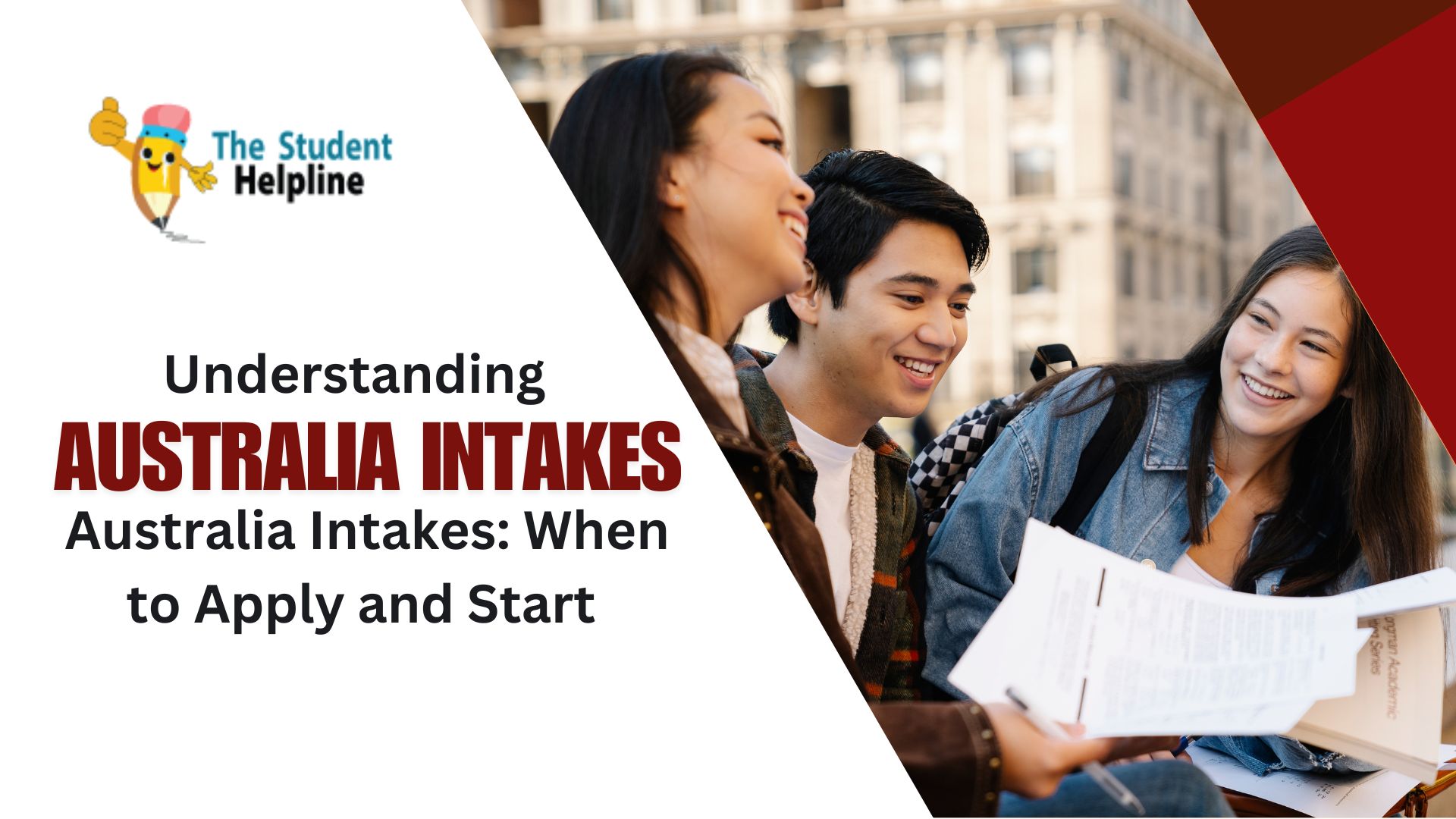
Australia has emerged as a top destination for international students seeking quality education and cultural diversity. The process of applying to Australian universities involves understanding the various intakes and timelines. This comprehensive guide will help you navigate the intricacies of Australia Intakes, ensuring you make informed decisions for your academic journey.
What Are Australia Intakes?
Australia Intakes refer to the specific times during the year when universities accept applications and enroll students. Unlike other countries, Australia primarily operates on a two-intake system, offering students the flexibility to choose the best time to start their studies. Knowing these intakes and their schedules is essential for planning your academic career.
Types of Intakes in Australia
1. February Intake (Semester 1)
Also known as the primary intake, the February Intake is the most popular among students. Here’s what you need to know:
-
Duration: This intake typically begins in late February or early March and runs through June.
-
Programs Offered: Most courses, including undergraduate, postgraduate, and research programs, are available.
-
Benefits: Students opting for this intake enjoy a wider range of courses, scholarships, and housing options.
2. July Intake (Semester 2)
The July Intake is the secondary intake, attracting students who missed the February cycle or prefer a mid-year start.
-
Duration: Commences in late July and concludes in November.
-
Programs Offered: A slightly limited range of courses compared to the February Intake.
-
Benefits: This intake provides ample preparation time for students finalizing their applications and gathering required documents.
3. November Intake (Limited Programs)
Although not as prominent, some universities offer a November Intake, primarily for specific programs like vocational and short-term courses.
-
Duration: Starts in November and extends into February.
-
Programs Offered: Limited to particular disciplines or bridging courses.
-
Benefits: This intake can serve as a strategic option for students targeting niche programs or additional qualifications.
Key Deadlines for Each Australia Intake
Understanding deadlines is critical for ensuring your application is processed without delays. Missing an application deadline can result in waiting for the next intake cycle.
February Intake Deadlines
-
Applications Open: March to October (previous year)
-
Application Deadline: October to November
-
Offer Letters Issued: November to December
-
Visa Applications: December to February
July Intake Deadlines
-
Applications Open: October to March
-
Application Deadline: March to April
-
Offer Letters Issued: April to May
-
Visa Applications: May to July
November Intake Deadlines
-
Applications Open: May to August
-
Application Deadline: August to September
-
Offer Letters Issued: September to October
-
Visa Applications: October to November
How to Choose the Right Intake
Selecting the right Australia Intake depends on several factors, including your academic readiness, financial planning, and program availability. Here’s a breakdown:
Academic Preparedness
Evaluate your readiness to begin studies, including your high school or undergraduate results, English proficiency scores, and other prerequisites.
Program Availability
Not all programs are available in every intake. Check the course schedules of your preferred universities.
Financial Considerations
Plan your finances in advance, as different intakes may have varying costs for tuition, accommodation, and travel.
Visa Processing Time
Ensure you have sufficient time for visa processing. Delays in documentation can affect your enrollment.
Application Process for Australia Intakes
The application process involves several steps. Here’s a detailed guide:
Step 1: Research and Shortlist Universities
Identify the universities and courses that align with your academic goals. Resources like The Student Helpline can provide personalized guidance.
Step 2: Check Eligibility Requirements
Each university and program has specific eligibility criteria. Ensure you meet requirements like academic qualifications, English proficiency, and work experience (if applicable).
Step 3: Prepare Application Documents
Typical documents include:
-
Academic transcripts
-
English proficiency test scores (IELTS, TOEFL, etc.)
-
Statement of Purpose (SOP)
-
Letters of Recommendation (LORs)
-
Updated Resume
Step 4: Submit Applications
Apply directly through the university’s portal or via authorized education consultants like The Student Helpline. Double-check deadlines and application fees.
Step 5: Await Offer Letter
Once submitted, universities review applications and issue offer letters to successful candidates.
Step 6: Accept Offer and Pay Fees
After receiving the offer, accept it by paying the required deposit and confirming your seat.
Step 7: Apply for Visa
Complete the student visa application process, ensuring all documents are accurate and submitted on time.
Role of The Student Helpline in Australia Intakes
Navigating the complexities of Intakes in Australia can be challenging. The Student Helpline simplifies this process by offering:
-
Personalized Guidance: Tailored advice on choosing intakes and universities.
-
Document Assistance: Help in preparing and submitting application materials.
-
Visa Support: Expertise in handling student visa applications.
-
Timely Reminders: Alerts for key deadlines and milestones.
Advantages of Studying in Australia
Australia offers a plethora of benefits for international students, including:
1. World-Class Education
Australian universities consistently rank among the top globally, offering diverse and innovative programs.
2. Multicultural Environment
The vibrant and inclusive culture fosters global connections and a sense of belonging.
3. Work Opportunities
International students can work part-time during studies and full-time during breaks, gaining valuable experience.
4. Pathways to Permanent Residency
Australia provides clear pathways for skilled graduates to transition into permanent residency.
5. Support Services
Universities and consultants like The Student Helpline offer comprehensive support for academic and personal needs.
Tips for a Successful Application
-
Start Early: Begin researching and preparing documents well in advance.
-
Seek Expert Advice: Utilize services like The Student Helpline for professional guidance.
-
Stay Organized: Keep track of deadlines and required materials.
-
Focus on Quality: Ensure your SOP and other documents reflect your aspirations and strengths.
Conclusion
Understanding Australia Intakes is crucial for planning your educational journey effectively. With multiple intakes and diverse opportunities, Australia offers unparalleled flexibility for students worldwide. Leverage resources like The Student Helpline to streamline the process and achieve your academic goals. By staying informed and prepared, you can embark on a rewarding study experience in Australia.






Leave a Reply